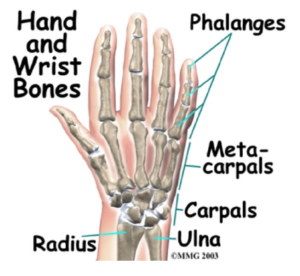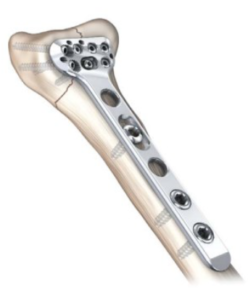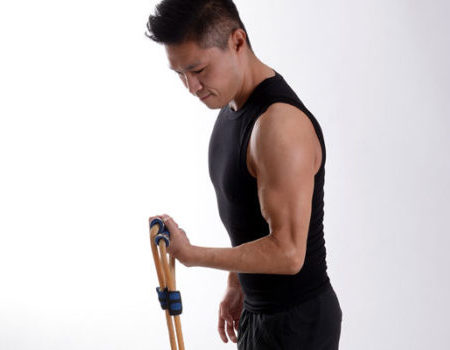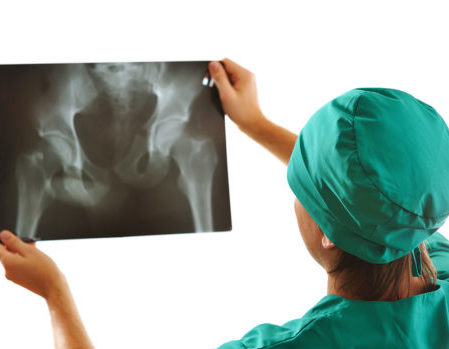Wrist Fractures: Do I Need Surgery?
Aug 29, 2019Richard “Alex” Sweet II, MD
Anatomy: The wrist is made up of two large bones and many small bones. The small bones of the hand (carpal
bones) can be fractured (and some may require surgery) but are not discussed here. The main bones of the wrist are the radius and ulna. Typically in a wrist fracture both of these bones are broken, however the radius is of paramount importance as it bears over 70% the weight of forces through the wrist. Restoring anatomy and the alignment of the radius is crucial to maintaining proper wrist function including range of motion and strength.
the radius and ulna. Typically in a wrist fracture both of these bones are broken, however the radius is of paramount importance as it bears over 70% the weight of forces through the wrist. Restoring anatomy and the alignment of the radius is crucial to maintaining proper wrist function including range of motion and strength.
Who needs Surgery?
In the Emergency Room, wrist fractures are reduced (aligned using manual
manipulation) and splinted. Then, in the office setting non-operative fractures are casted while fractures requiring fixation are scheduled for surgery. Determining the need for surgery is quite complex. Despite initial reduction in the ER, many wrist fractures displace further over time even in a cast. There are many angles and measurements that can be used to calculate the severity of the fracture and help predict the functional outcome. Elderly, less active individuals rarely need surgery. One of the only reasons for elderly patients to get surgery is if they have another injury to a lower extremity (wrist fixation aids in mobilization). Nevertheless, even some patients of advanced age are avid golfers, painters, or need full wrist function for daily activities and will prefer surgery. Younger patients require surgery more often to regain fullfunction and use of the wrist. In summary, the wrist is not a joint that must be fixed to save the patients life; however there are many patients whose lives can be dramatically improved with surgery as compared to without.

How is surgery performed?
The radius is typically fixed with a plate and screws. The ulna, if broken,
rarely requires fixation. The fixated radius will hold the ulna in proper
alignment and allow it to heal. The incision is on the volar (palmar) side
of the wrist and is 2 to 3 inches in length typically, depending on the
fracture and patient size. The plate and screws are designed to stay in
the body forever and only on rare occasions need to be removed.

Advantages of Surgery?
Postoperatively the patient is placed into a
splint to allow for comfort and soft tissue rest.The splint can be removed after only a few days if the arm is needed for mobilizationusing a platform walker. If the wrist is an isolated injury, the splint will typically be removed at 10-14 days in the office when the staples will be taken out as well. Wrist mobilization begins immediately. Fractures treated without surgery require a minimum of 8 weeks in cast and are very stiff once the cast is removed. The cast can be quite itchy, smelly, and uncomfortable. Postoperatively, once the splint is off you will be given a removable wrist brace that can be used for comfort and to protect the wrist when out of the house. Improved range of motion and strength, less deformity, and earlier return to full function are all expected with surgery. Additionally, wrist fractures needing surgery, but treated without, have problems with arthritis, tendon ruptures and poor functioning of the wrist.
Disadvantages of Surgery?
The main disadvantage is simply the risk of surgery. While typically this is a very
safe outpatient surgery, no surgery is 100% without complication. Infections are
exceedingly uncommon but can happen. Rarely, soft tissue irritation from the plate
can occur that requires removal of the plate and screws. The arteries and nerves in
the wrist are well protected and are at minimal risk. Some reduced sensation to
the wrist and hand can occur but is usually temporary.
Post Operative Course: Fortunately, the wrist tends to heal fairly quickly. After
surgery pain usually subsides after only a few days and the wrist is usually pain
free long before the bone is fully healed.
- Splint: Left on until seen in the office. If you are unable to make it to the
 office until 3-4 weeks post op, you may remove the splint yourself and begin gentle motion exercises.
office until 3-4 weeks post op, you may remove the splint yourself and begin gentle motion exercises. - Staples: Come out at about 10-14 days in the office when the splint is removed.
- Weight Bearing: If needed, weight bearing is allowed through the elbow for a platform walker. While the
wrist may be used for simple tasks such as typing and writing immediately after surgery, carrying objects or
even opening doors should be avoided for 8 weeks. - Mobilization: Patients will be given a removable wrist brace that may be used for comfort and when out of
the house for protection. However, it does not need to be worn at all times. For patients with lower extremity
injuries as well, full weight can be placed through the elbow joint to aid in ambulation with a platform walker. - Range of Motion: Gentle wrist motion can be started immediately once the splint is off.
- Therapy: Is usually unnecessary for wrist fractures.
- Long Term: It takes 2-3 months for the bone to fully heal. Some long term stiffness is normal, but much better
function of the wrist is expected after surgery as compared to non-operative management. With surgery, a
pain-free and fully functional wrist is typically expected even before full bony healing has occurred.



 Our patients can receive MRI imaging onsite at both our Louisville and New Albany Clinics.
Our patients can receive MRI imaging onsite at both our Louisville and New Albany Clinics. Providing the latest advances in orthopedic surgery is our specialty.
Providing the latest advances in orthopedic surgery is our specialty. We take a unique, multidisciplinary approach to pain management.
We take a unique, multidisciplinary approach to pain management. Our physical therapists use advanced techniques to help restore strength and mobility.
Our physical therapists use advanced techniques to help restore strength and mobility.  We provide comprehensive, conservative care for a wide variety of foot and ankle conditions.
We provide comprehensive, conservative care for a wide variety of foot and ankle conditions. We offer same- and next-day care to patients with acute injuries.
We offer same- and next-day care to patients with acute injuries. Get back in the game with help from our sports medicine specialists.
Get back in the game with help from our sports medicine specialists.  Our centers are equipped with a state-of-the-art digital X-ray machine.
Our centers are equipped with a state-of-the-art digital X-ray machine.